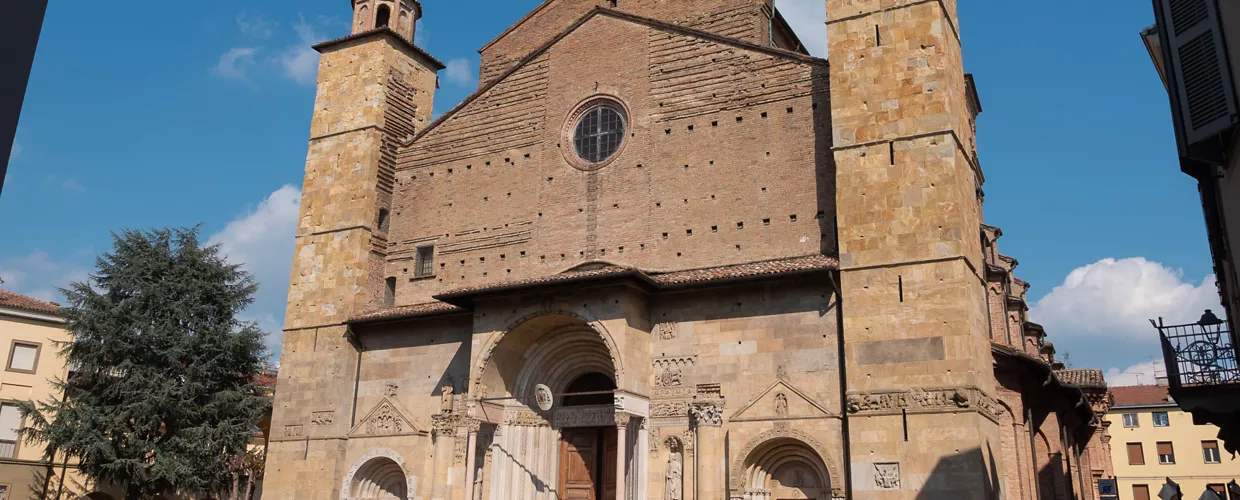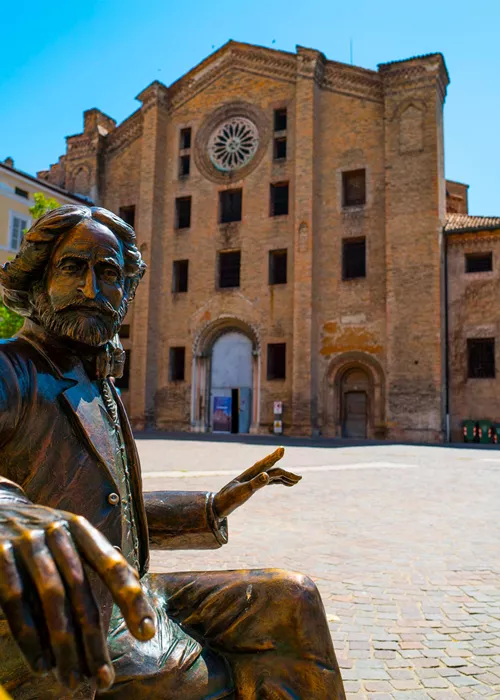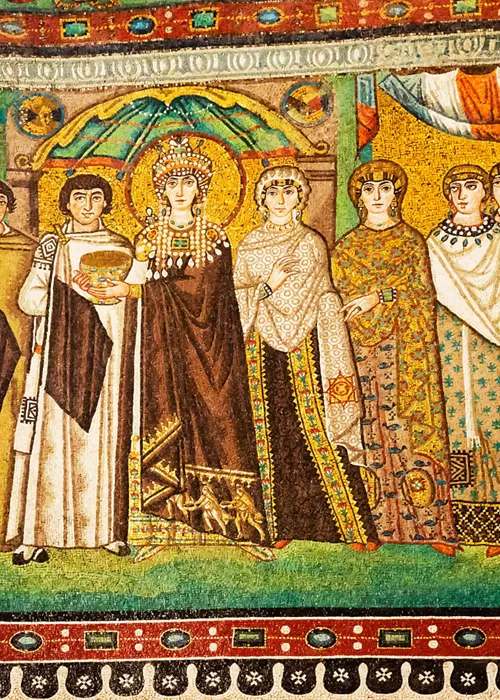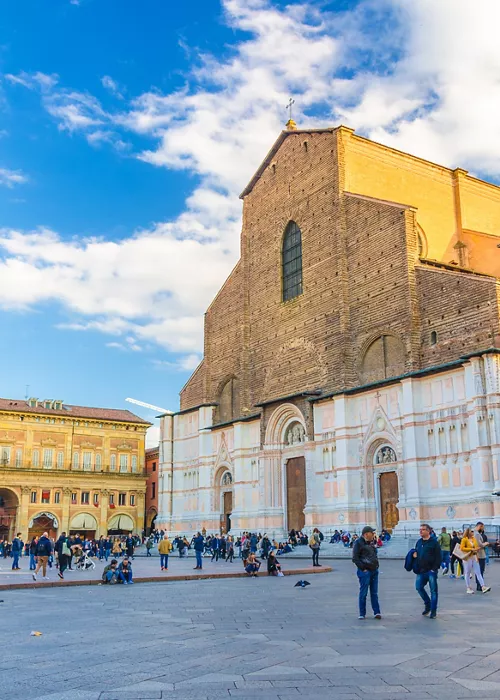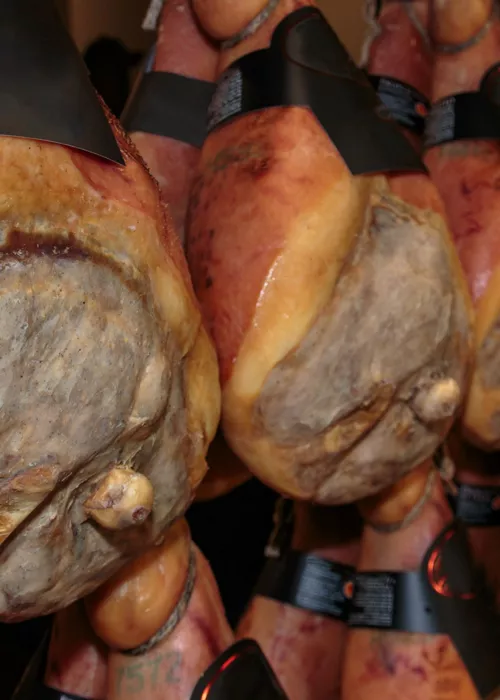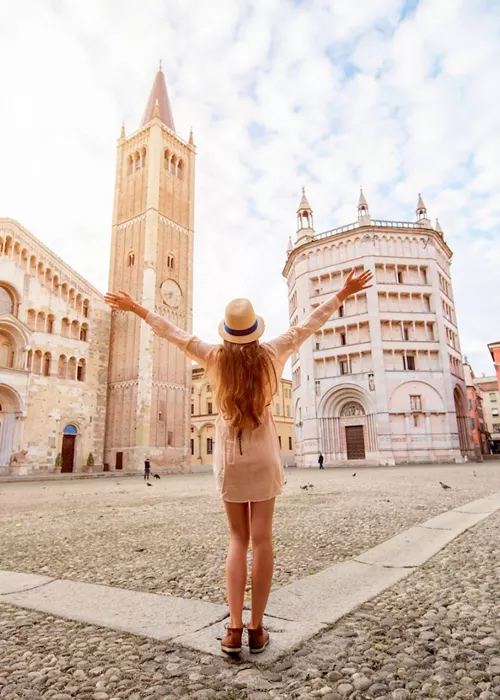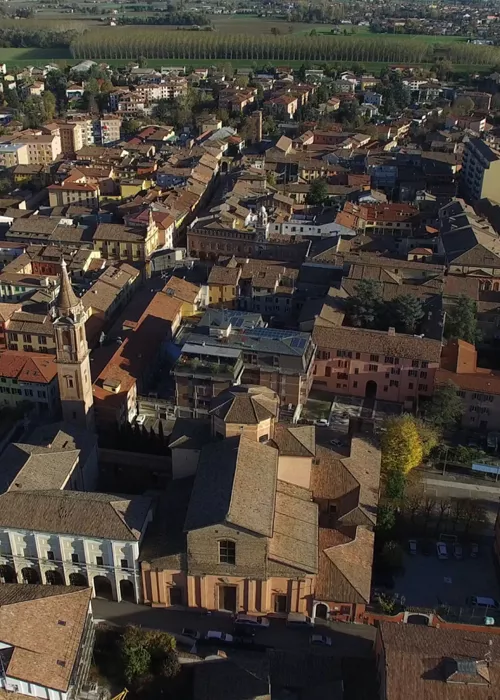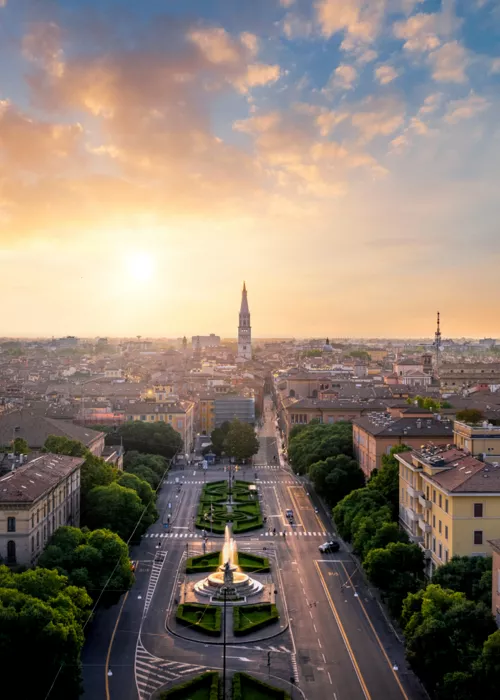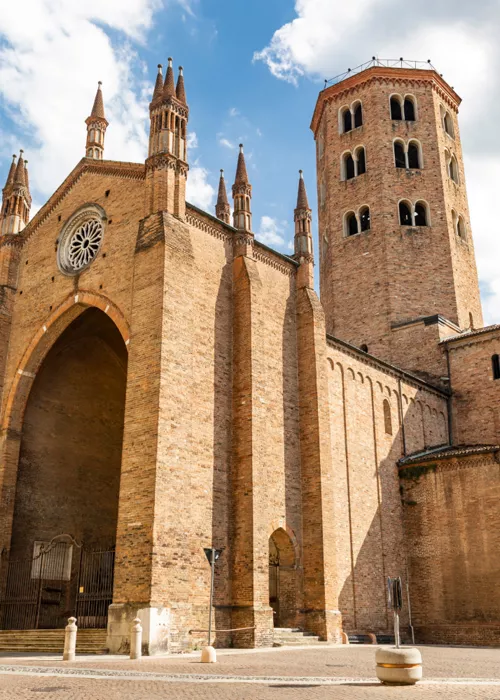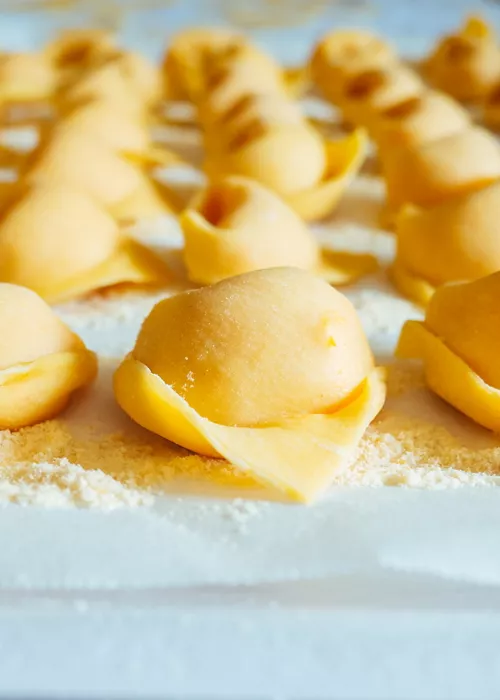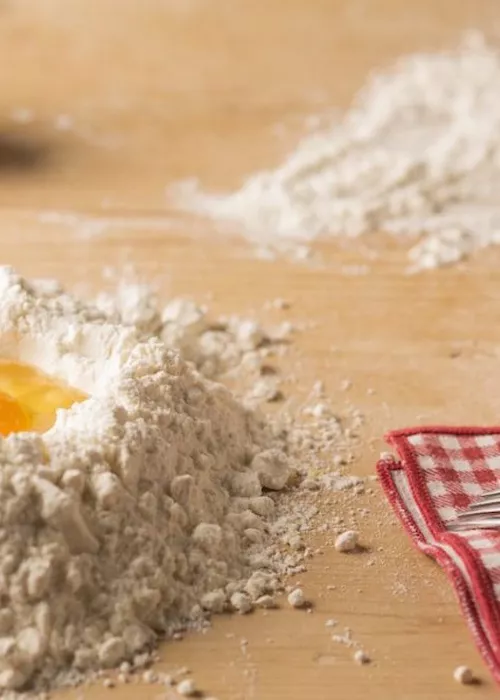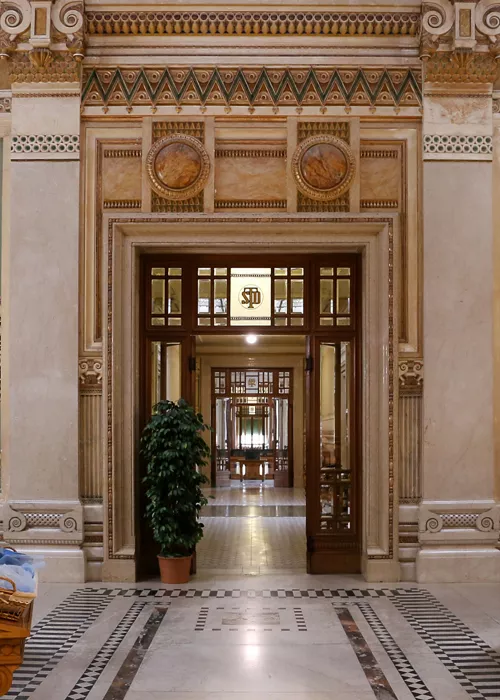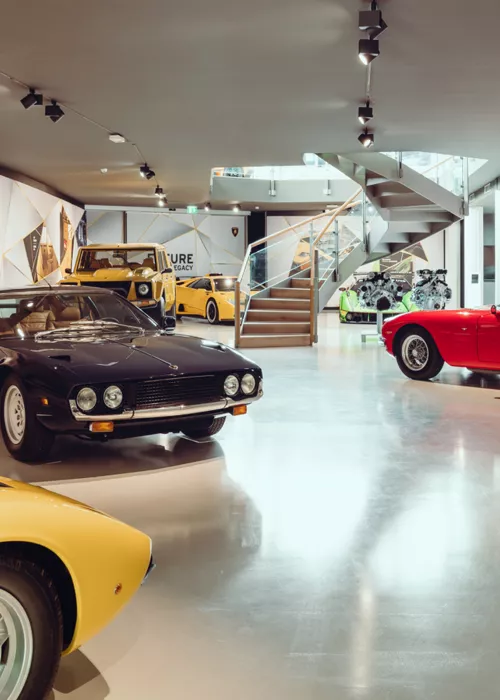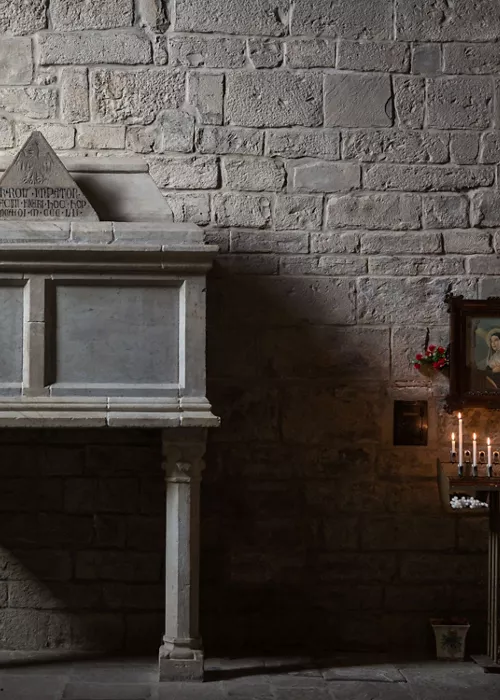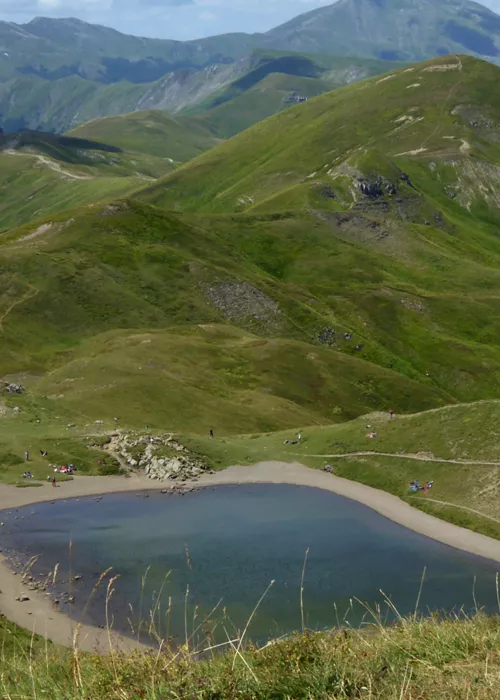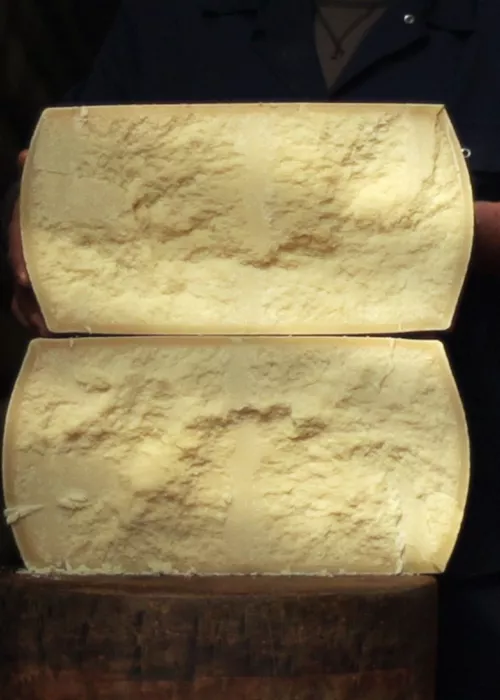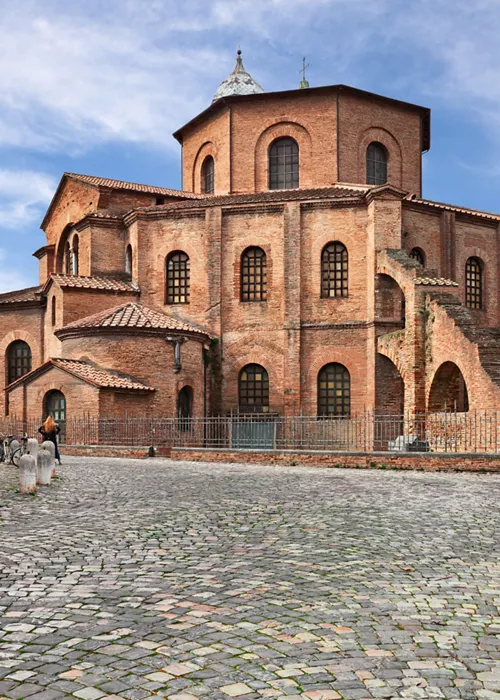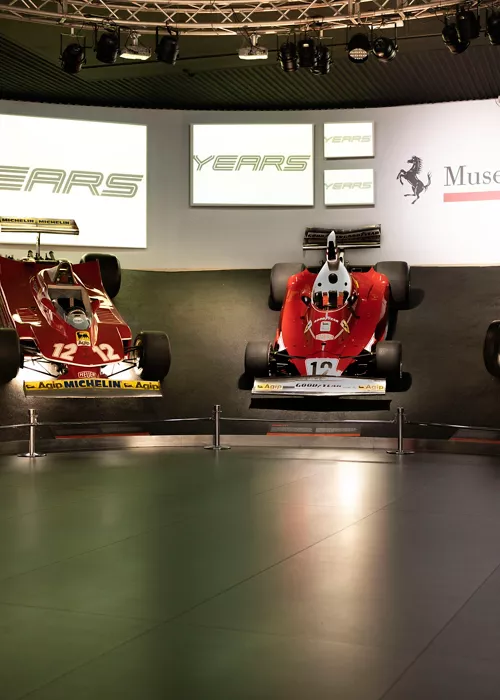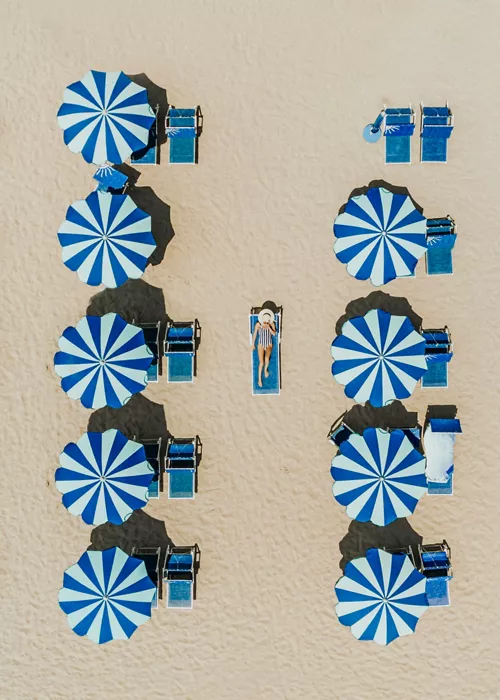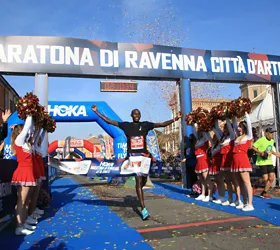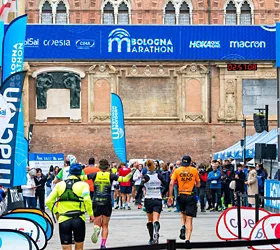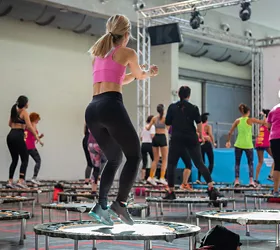Fidenza and its Duomo: a Romanesque jewel along the Via Francigena
The Duomo (cathedral) of Fidenza, the second largest city in the province of Parma, some 30 kilometres away, is located in the ancient village of San Donnino. It also serves as an access point of the Via Francigena itinerary. An ancient pilgrimage destination, San Donnino gave its name to the city of Fidenza until 1927, when it was decided to restore the Latin name of the Roman municipality on which the site stood, Fidentia.
The mysterious history of San Donnino
But the story of the martyrdom of San Donnino, to whom the Duomo of Fidenza is also dedicated, has permeated the city's history since early Christian times. A trusted man of the Roman emperor Maximian, it is said that the saint was beheaded by order of the emperor following his decision to convert to Christianity. His martyrdom is believed to have taken place on the banks of the Stirone torrent, not far from where the church now stands. Legend has it that, after the beheading, Donnino's headless body was brought back to life just long enough for him to cross the stream, with his severed head in his hands, to then come to rest forever on the opposite bank.
This and other miraculous occurrences attracted an increasing number of devotees to the site over time, making the village of San Donnino a popular pilgrimage destination and a major trading centre. The remains of the saint were discovered and reburied several times. The last to exhume his remains, granting him definitive and solemn recognition, would have been Charlemagne, who was warned by a premonition in a dream and forced by the obstinacy of his horse to stop there during a journey. Now the saint's relics rest in the crypt of the cathedral, but his myth is still alive: a recent autopsy revealed that the body preserved there had not been decapitated. The plot thickens.
The wonders of the cathedral
But the appeal of San Donnino's miraculous deed transcends all scientific evidence. His exploits and what followed his martyrdom are detailed, like the strips of a comic strip, on the bas-reliefs and statues created by architect and sculptor Benedetto Antelami and his school along the façade of the Duomo of Fidenza. A masterpiece of Po Valley Romanesque architecture, the basilica was built between the 12th and 13th centuries on the remains of an early Christian church. Alongside the description of the existence and death of the saint, tales from the Old and New Testaments, stories of Mary and other apostles and other wondrous anecdotes related to pilgrimages come to life for didactic purposes.
On the gabled façade of the Duomo, which is partially incomplete, are three portals embellished with splays: the side one to the right is called the “portal of life”, and is surrounded by columns supported by rams; and “portal of death” is the one on the left, flanked by columns supported by human figures, called telamons. The central portal, surmounted by the bas-relief cycle of Saint Donnino, is “guarded” by a pair of stylised lions. The three portals lead to three naves, divided by columns and connected by cross vaults. Below is the crypt with the saint's alleged remains.
Fidenza, with its music, monuments and museums
As you leave the Duomo, in Piazza Giuseppe Verdi, you come to the Gerolamo Magnani Theatre, built in 1813 to a design by architect Nicolò Bettoli and officially opened on 26 October 1861 with Giuseppe Verdi's Il Trovatore, the theatre's hall being a jewel of stucco. In Piazza Garibaldi, meanwhile, stands the neo-Gothic architecture of the Palazzo Comunale, with its battlements and arched portico, while the baroque building of the Palazzo delle Orsoline is now home to the Luigi Musini Museum of the Risorgimento, an exhibition space dedicated to the Italian Risorgimento and the anti-fascist resistance.
Also worth a visit is the Roman Bridge over the Stirone river, in the area of today's Piazza Grandi, made from blocks of Piacenza tuff, and probably dating back to the 1st century: only two of the spans of the ancient structure are still visible today. The bridge, surmounted by an imposing crenellated tower, a defence bastion erected in 1364 at the behest of the Visconti family who ruled the town at the time, was the access point to the ancient town for travellers coming from the north along the Via Emilia.
Alternative itineraries of sport, food and wine and shopping
Fidenza, a destination for many food and wine tours due to its renowned food tradition, is also a popular choice for outdoor enthusiasts: its territory is criss-crossed by a dense network of cycle and trekking routes that cross the Via Francigena and provide a different way to discover local art and culture, amidst the hills and streams, the fortresses and castles of the Stirone and Piacenziano Park.
Finally, if you love shopping, note that about 7 kilometres from the centre of Fidenza is the Fidenza Village Outlet, a temple of fashion that brings together around a hundred boutiques of national and international brands in an evocative setting of architecture inspired by the operas of Giuseppe Verdi, who was born not far from here: ideal for those in search of prestigious clothing at reduced prices.



